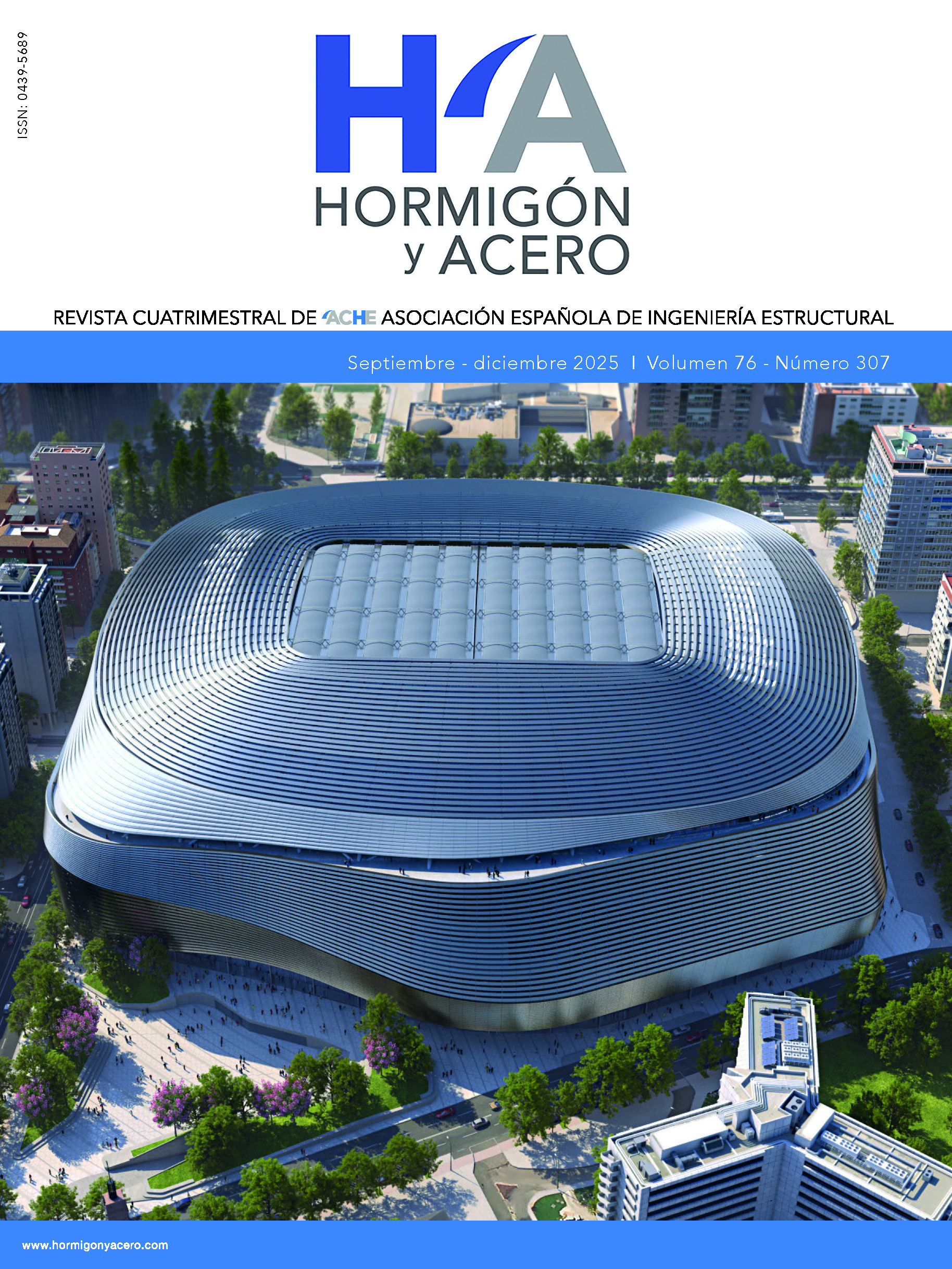Número actual
Número completo
Monog. Estadio Santiago Bernabéu
ARTÍCULOS MÁS CITADOS (2020-2025)
Compressive Behavior of Steel-Fiber Reinforced Concrete in Annex L of New Eurocode 2
Gonzalo Ruiz, Ángel De La Rosa, Elisa Poveda, Riccardo Zanon, Markus Schäfer, Sébastien Wolf
10.33586/hya.2022.3092
La tomografía computerizada más allá de la medicina: Aplicaciones al estudio microestructural del hormigón y otros materiales de la ingeniería
Álvaro Mena Alonso, Dorys Carmen González Cabrera, Jesús Mínguez Algarra, Miguel Ángel Vicente Cabrera
10.33586/hya.2020.3020
Aurelio Muttoni, Joao T. Simoes, Duarte M.V. Faria, Miguel Fernández Ruiz
10.33586/hya.2022.3091
ARTÍCULOS MÁS VISITADOS (2020-2025)
Refuerzos activos de vigas y forjados mediante perfiles metálicos
Raúl Rubén Rodríguez Escribano, Enrique González Valle, Jorge Ley Urzaiz
10.33586/hya.2021.3053
Una revisión biográfica y significativa de las estructuras mixtas de hormigón y acero estructural
Álvaro Serrano Corral, Julio Martínez Calzón
10.33586/hya.2020.2023
Inspección y rehabilitación de puentes atirantados en la red de carreteras del Estado.
Emilio Criado Morán, Alvaro Navareño Rojo
10.33586/hya.2021.3034
Hormigón y Acero fue constituida en 1950 y es el órgano de expresión pública de la Asociación Española de Ingeniería Estructural (ACHE). En la Revista se publican artículos relevantes dentro del campo de las estructuras y de los materiales que las conforman, tanto en obra civil como en edificación. La revista va dirigida a ingenieros, arquitectos, empresas constructoras, oficinas de ingeniería, estudios de arquitectura, universidades y centros de investigación relacionados con la construcción de obra civil y edificación. Se rige por su propio Reglamento. Sus órganos de gobierno y gestión son: Consejo Editorial, Comité de Redacción y Consejo Asesor-Científico.

